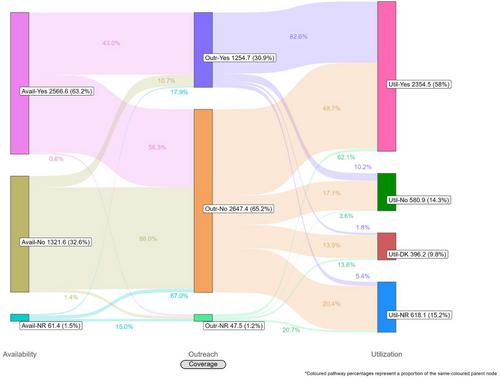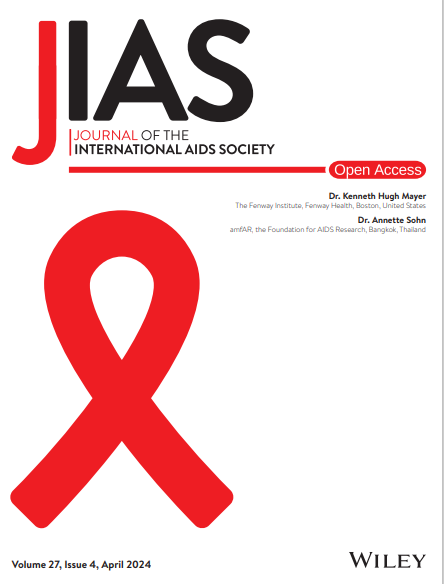Advancing Programme Science approaches to understand gaps in HIV prevention programme coverage for key populations in 12 Nigerian states: findings from the 2020 Integrated Biological and Behavioural Surveillance Survey
Abstract
Introduction
Effective HIV prevention programme coverage is necessary to achieve Nigeria's goal of ending the epidemic by 2030. Recent evidence highlights gaps in service coverage and utilization across the country. The Effective Programme Coverage framework is a Programme Science tool to optimize a programme's population-level impact by examining gaps in programme coverage using data generated through programme-embedded research and learning. We apply the framework using Integrated Biological and Behavioural Surveillance Survey (IBBSS) data from Nigeria to examine coverage of four prevention interventions—condoms, HIV testing, and needle and syringe programmes (NSP)—among four key population groups—female sex workers (FSW), men who have sex with men (MSM), people who inject drugs (PWID) and transgender people.
Methods
Data from Nigeria's 2020 IBBSS, implemented in 12 states, were analysed to examine HIV prevention programme coverage among key populations. For each key population group and prevention intervention of interest, weighted IBBSS data were used to retrospectively generate coverage cascades that identify and quantify coverage gaps. Required coverage targets were informed by targets articulated in Nigeria's National HIV/AIDS Strategic Framework or, in their absence, by guidelines from policy normative bodies. Availability-, outreach- and utilization coverage proxy indicators were defined using variables from IBBSS data collection tools. Sankey diagrams are presented to visualize pathways followed by participants between coverage cascade steps.
Results
Required coverage targets were missed for HIV testing and NSP among all key population groups. Condom availability coverage surpassed required coverage targets among FSW and MSM, while utilization coverage only among FSW exceeded the 90% required coverage target. Outreach coverage was low for all key population groups, falling below all required coverage targets.
Conclusions
Our findings identify critical gaps in HIV prevention programme coverage for key populations in Nigeria and demonstrate non-linear movement across coverage cascades, signalling the need for innovative solutions to optimize coverage of prevention services. Programme-embedded research is required to better understand how key population groups in Nigeria access and use different HIV prevention services so that programmes, policies and resource allocation decisions can be optimized to achieve effective programme coverage and population-level impact.


 求助内容:
求助内容: 应助结果提醒方式:
应助结果提醒方式:


